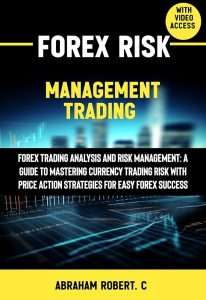Forex Day Trading: A Comprehensive Guide
Unleash your inner trader! Learn the secrets to successful Forex day trading. Master market dynamics, develop winning strategies, and manage risk like a pro. Dive into our comprehensive guide and conquer the Forex world!
Forex day trading, the practice of buying and selling currency pairs within a single trading day, presents both significant opportunities and substantial challenges. It demands a keen understanding of market dynamics, a robust trading strategy, and unwavering discipline. Success in this fast-paced environment requires meticulous planning, constant learning, and the ability to adapt quickly to changing market conditions. This comprehensive guide will delve into the intricacies of forex day trading, providing you with the knowledge and tools to navigate this exciting yet demanding field.
Understanding the Forex Market
The foreign exchange market, or Forex, is the largest and most liquid financial market globally. Unlike traditional stock exchanges with set opening and closing times, Forex operates 24 hours a day, five days a week, spanning across various global time zones. This continuous trading environment allows for constant opportunities, but it also necessitates a high level of vigilance and adaptability. Understanding the underlying forces driving currency fluctuations is paramount to successful day trading. These forces include economic indicators, political events, and global news, all of which can significantly impact currency valuations within a short timeframe.
Key Factors Influencing Forex Day Trading
- Economic Indicators: Data releases such as inflation rates, employment figures, and interest rate decisions can trigger significant price movements. Traders closely monitor these announcements, anticipating their impact on currency values.
- Geopolitical Events: Political instability, international conflicts, and significant policy changes can create volatility in the Forex market. Day traders must be aware of potential geopolitical risks and their potential impact on their trading positions.
- Central Bank Actions: Decisions made by central banks regarding monetary policy, including interest rate adjustments and quantitative easing programs, significantly influence currency exchange rates. Understanding central bank strategies is crucial for effective day trading.
- Market Sentiment: The overall mood of the market, whether optimistic or pessimistic, plays a substantial role in price movements. Day traders often use sentiment indicators to gauge market direction and manage their risk accordingly.
Developing a Successful Forex Day Trading Strategy
A well-defined trading strategy is the cornerstone of successful Forex day trading. It should incorporate risk management techniques, clear entry and exit points, and a consistent approach to trading. This strategy should be tailored to your individual trading style, risk tolerance, and market understanding. Avoid impulsive decisions; stick to your plan, and adjust it as needed based on market feedback and your learning process.
Essential Components of a Forex Day Trading Strategy
A robust strategy needs a clear methodology. Consider these vital components:
- Technical Analysis: Technical analysis involves using charts and indicators to identify trading opportunities based on price patterns and historical data. Commonly used indicators include moving averages, relative strength index (RSI), and MACD.
- Fundamental Analysis: Fundamental analysis focuses on evaluating the economic and political factors affecting currency values. This involves examining economic indicators, news events, and geopolitical developments.
- Risk Management: Effective risk management is crucial in day trading. This includes setting stop-loss orders to limit potential losses, determining position sizing based on your account balance, and diversifying your portfolio to reduce overall risk exposure.
- Trading Psychology: Emotions can significantly impact trading decisions. Developing a disciplined mindset, avoiding impulsive trades, and managing stress are crucial for long-term success.
Choosing the Right Forex Broker
Selecting a reliable and reputable Forex broker is critical for your trading success. A good broker will offer competitive spreads, fast execution speeds, and a user-friendly trading platform. Research different brokers, compare their fees and services, and ensure they are regulated by a reputable financial authority. Consider factors such as customer support, educational resources, and the availability of trading tools.
Mastering Technical Analysis for Day Trading
Technical analysis is a cornerstone of successful Forex day trading. It involves studying price charts and using various indicators to identify potential trading opportunities and predict future price movements. Learning to interpret candlestick patterns, support and resistance levels, and various technical indicators is crucial. Mastering these skills allows traders to identify potential entry and exit points with higher precision, increasing the probability of successful trades.
Key Technical Indicators for Day Traders
Numerous technical indicators are available to assist in your analysis. Each indicator provides a unique perspective on market dynamics. Understanding their strengths and limitations is crucial for effective decision-making. Some commonly used indicators include:
- Moving Averages: Moving averages smooth out price fluctuations, helping to identify trends and potential reversal points.
- Relative Strength Index (RSI): The RSI measures the magnitude of recent price changes to evaluate overbought or oversold conditions.
- MACD (Moving Average Convergence Divergence): The MACD identifies changes in momentum by comparing two moving averages.
- Bollinger Bands: Bollinger Bands show price volatility and potential reversal points based on standard deviation from a moving average.
Utilizing Fundamental Analysis in Day Trading
While technical analysis focuses on price charts, fundamental analysis considers the underlying economic and political factors influencing currency values. This involves analyzing economic data releases, central bank announcements, geopolitical events, and market sentiment. Integrating fundamental analysis with technical analysis provides a more comprehensive approach to Forex day trading, enhancing your overall decision-making process.
Key Fundamental Factors to Monitor
Keeping a close eye on fundamental economic indicators is crucial. These include:
- Interest Rates: Changes in interest rates significantly impact currency values. Higher interest rates typically attract foreign investment, strengthening the currency.
- Inflation Rates: High inflation erodes purchasing power and can weaken a currency. Central banks often adjust interest rates to control inflation.
- Gross Domestic Product (GDP): GDP growth indicates the overall health of an economy. Strong GDP growth usually strengthens a currency.
- Unemployment Rates: Low unemployment rates suggest a strong economy, typically leading to a stronger currency.
Risk Management Strategies for Forex Day Traders
Effective risk management is paramount in Forex day trading. Without it, even the most skilled traders can suffer significant losses. Implementing sound risk management strategies is not just about protecting your capital; it’s about ensuring the long-term sustainability of your trading endeavors. This involves setting realistic goals, controlling emotions, and utilizing appropriate risk mitigation techniques.
Essential Risk Management Techniques
Several strategies help mitigate risk; These include:
- Stop-Loss Orders: Stop-loss orders automatically close a position when the price reaches a predetermined level, limiting potential losses.
- Take-Profit Orders: Take-profit orders automatically close a position when the price reaches a predetermined level, securing profits.
- Position Sizing: Position sizing involves determining the appropriate amount to invest in each trade, based on your account balance and risk tolerance.
- Diversification: Diversification involves spreading your investments across multiple currency pairs to reduce the impact of any single trade’s outcome.
The Psychology of Forex Day Trading
Successful Forex day trading requires more than just technical and fundamental skills; it demands a strong understanding of trading psychology. Emotions like fear, greed, and impatience can significantly impact trading decisions, leading to poor outcomes. Developing emotional control and discipline is crucial for long-term success. This often involves practicing mindfulness, maintaining a trading journal, and seeking feedback from experienced traders.
Consistent learning and adaptation are key to navigating the ever-changing dynamics of the Forex market. Staying updated on global events, economic indicators, and new trading strategies is crucial for long-term success. Continuous learning allows traders to refine their strategies, adapt to changing market conditions, and ultimately increase their chances of profitability. Remember, the Forex market is dynamic and unpredictable; continuous self-improvement is your best asset.
Forex day trading offers the potential for significant financial rewards but also involves substantial risks. It demands dedication, discipline, and a thorough understanding of market dynamics. Successful traders are those who combine solid trading strategies with effective risk management and unwavering emotional control. Consistent learning, adaptability, and a relentless pursuit of knowledge are the keys to navigating the complexities of this challenging yet rewarding field.
This guide provides a foundational understanding of Forex day trading. However, it is crucial to remember that practice and experience are essential for mastering this skill. Begin with a demo account to practice your strategies without risking real capital. Gradually increase your investment as you gain confidence and experience. Remember that success takes time, patience, and a willingness to learn from both successes and failures.
The Forex market is constantly evolving, presenting both exciting opportunities and significant challenges. By combining technical and fundamental analysis, implementing sound risk management strategies, and cultivating a disciplined mindset, you can increase your chances of achieving your trading goals. Continuous learning and adaptation are key to navigating this dynamic environment.
Embrace the journey of learning and refining your skills. The path to successful Forex day trading is a continuous process of learning, adapting, and refining your approach. With dedication and the right knowledge, you can navigate the complexities of the market and achieve your financial aspirations. Remember to always trade responsibly.







